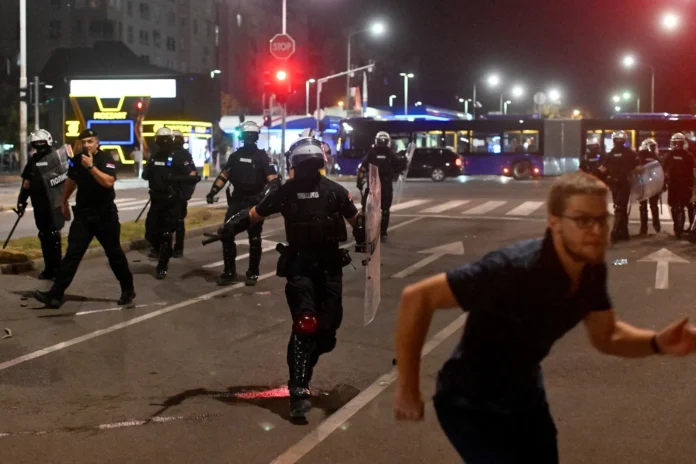Protests Spread Across Serbia
For the third night in a row, Serbia has been shaken by violent protests against the government of President Aleksandar Vucic. What started nine months ago as peaceful student gatherings after a deadly railway station collapse has now turned into one of the largest and most violent waves of unrest the country has seen in years.
On Thursday evening, crowds in Novi Sad stormed the offices of the ruling Serbian Progressive Party, breaking windows and taking out furniture and files. Police responded with tear gas in both Novi Sad and the capital Belgrade, but the unrest quickly spread. Reports say over 100 people have been hurt and more than 100 arrested, a sign of how quickly the situation has escalated.
Police Violence and Foreign Nationals Involved

Interior Minister Ivica Dacic confirmed that 121 officers have been injured since the unrest began earlier this week. He also stated that 114 people have been arrested, including several foreign nationals from Croatia, Slovenia, and Italy. His remarks sparked speculation about outside influence in the demonstrations.
The violence reached its highest point when a military officer in Novi Sad fired a warning shot after being surrounded by nearly 100 protesters. Videos shared online showed shocking scenes of police hitting protesters with batons, and in some cases kicking them while they were already on the ground. These images have fueled anger and raised accusations of excessive force.
Why People Are Angry
The roots of the protests go back to November 2024, when a newly renovated railway station canopy in Novi Sad collapsed, killing 16 people. Many Serbians blamed the tragedy on corruption and poor oversight by officials. The event became a rallying cry for those who have been demanding Vucic’s resignation, especially as he has been in power for 13 years.
Thousands of demonstrators have taken to the streets with chants like “He is finished,” showing their anger not just at the deadly collapse but at what they see as years of misrule. Opposition groups say the government ignored warnings about corruption and safety, and that the collapse was the final breaking point.
Government and International Response

President Vucic has rejected all claims of wrongdoing, instead accusing protesters of being “enemies of their own country.” He insists that his supporters did not start the violence and has promised more arrests. His comments have only deepened divisions between the government and the opposition.
Meanwhile, the international community is watching closely. The European Union’s Enlargement Commissioner Marta Kos expressed concern, saying people must be allowed to express themselves freely. UN experts have also warned about what they call a “pattern of repression,” pointing to arrests and the use of force against protesters.
Personal Analysis
What stands out in this crisis is not only the anger of the people but also how much trust in government has been lost. A single tragedy at a railway station has become a symbol of deeper corruption and mismanagement. Instead of calming tensions, the government’s tough stance and the heavy-handed police response have only made things worse.
It is also worrying that the protests are now drawing in attention from foreign actors, both through arrested individuals from neighboring countries and through international criticism. This shows that Serbia’s political crisis is no longer just an internal matter but is becoming a concern for the wider region and the EU.
If the government continues to treat the protests only as a threat rather than a call for accountability, the unrest could grow stronger. History shows that when people lose trust in leaders, even small sparks can turn into much larger fires.

